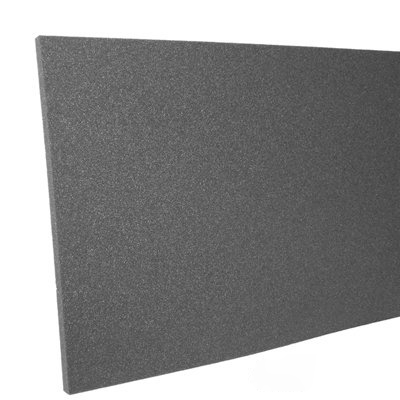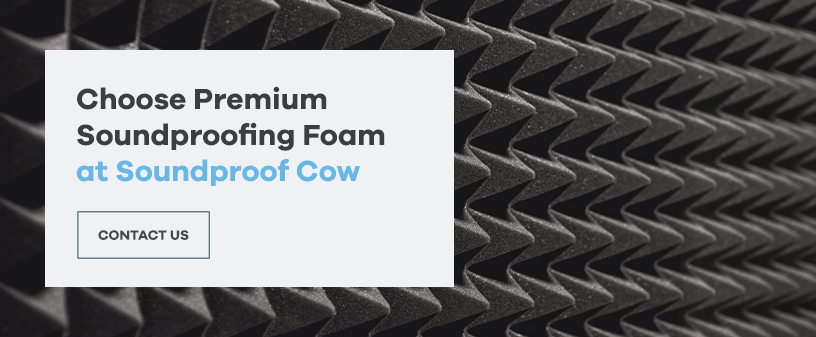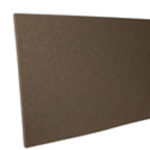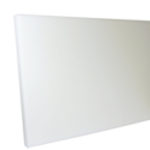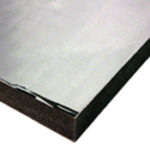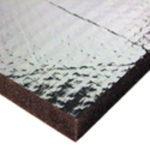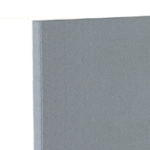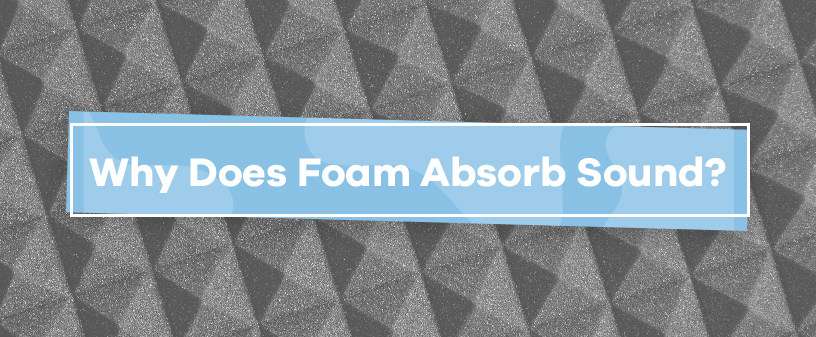
Whenever you’re at a loud concert or want to get a peaceful night of sleep on an airplane, you may find yourself popping a few pieces of foam earplugs into your ears. When you plug these tiny pieces of foam into your ears, you quickly notice that your ability to hear exterior noise diminishes. Why is that, exactly? It’s because foam works wonders at absorbing unwanted sounds.
Much like earplugs, acoustic foam provides users like you with the noise reduction qualities they desire. These heaven-sent pieces absorb sound so that any noise you generate inside stays in, while external noise remains outside. How does acoustic foam help block out these unwanted sounds? Will foam absorb sound? Keep reading to find out.
Does Foam Block Sound?
It’s important to understand a firm truth from the beginning — foam does not block sound. Many people put up acoustic foam on their walls thinking it will stop them from hearing their neighbor’s blaring TV at midnight when they’re trying to sleep. Others hang acoustic foam thinking they can then be as loud as they want without disturbing their neighbors. Both of these situations are untrue.
Foam materials contain tiny pores that allow sound to pass through. This means that you’ll still hear the neighbor’s TV and they’ll still hear you banging on your drum set. What, then, is the point of using acoustic foam products? Why do people like music producers and podcasters have foam panels on their walls?
The answer is that foam absorbs sound instead of blocking it. Below, we’ll take a closer look at how this works and the benefits sound-absorbing foam can provide to your space.
Open Celled vs. Closed Celled Acoustic Foam
To understand how foam reduces sound, it’s important first to learn how to differentiate between the two types of foams that absorb sounds. While both foams provide their own degree of insulation and barriers against noise, their properties distinguish them as two separate products.
Airborne acoustical energy converts to heat when contacting foam, diminishing the amplitude of the noise signal. The power of the sound becomes lost in the process, which means it’s essential to choose the soundproofing material that matches the air movement or pressure waves with the right amount of control levels. In other words, different types of foams will have different sound-absorbing characteristics. You’ll need to choose the best type for the sounds you plan on absorbing.
Open-cell foam provides a form that allows air to move through the material through porous spots and openings. As the name implies, this foam has open cells that absorb both sounds and liquids by retaining these components into their cell chambers. Unfortunately, their irregular shape means the user often does not have control over the level of sound energy absorbed. Open-cell foam is best for absorbing mid- and high-frequency sounds.
Closed-cell foam is a specific type of foam that boasts a higher R-Value than its open cell counterpart. Closed-cell foam has tightly-woven cells that produce a “closed” effect. Because of this, closed-cell foam results in a denser material that works better at absorbing low-frequency noise.
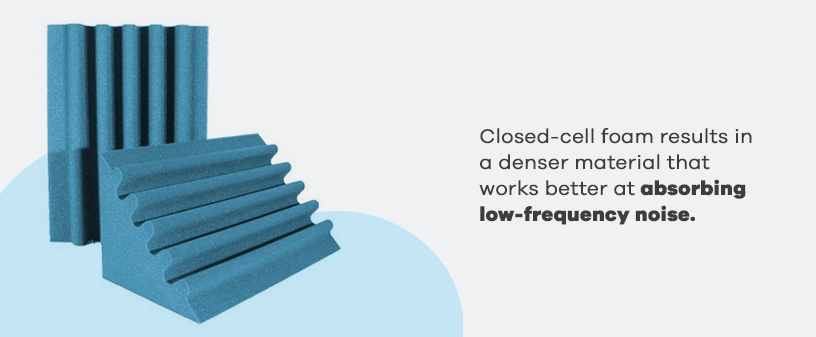
Sound Absorption Through Air Movement
So, does acoustic foam work? Yes — here’s how. Acoustical energy and airborne energy convert to heat during the process of sound saturation. Sound energy transforms into an absence of noise through absorption that transforms noises into heat, which produces the noise reduction levels you desire.
Air movement, also known as molecular velocity, is what typical insulators and absorbers use to reduce sound. This process consists of air movement through the sound-absorbing material that processes heat and essentially absorbs the noise. The amplitude of the sound diminishes and weakens the reflection of the noise and causes a dulled sound effect in the process of sound reduction.
What you then experience is less unwanted noise within a space, leading to more comfortable acoustics. And it’s all thanks to the foam’s ability to absorb sound and convert it to heat.
How Does Acoustic Foam Work for Sound Reduction?
You can pair acoustic foam with soundproofing materials to reach your desired outcome. With most sound-absorbing foam, you’ll find the materials are soft and flexible to create an environment where sound waves have a difficult time reverberating off hard surfaces like wood, drywall, metal beams and fixtures. Ultimately, acoustic foam converts sound waves into a form of heat energy and mitigates its ability to slap back into the environment toward the source, which results in a quieter room.
The acoustic foam you choose for a project should give you options for treatment. In addition to taking advantage of its sound reduction benefits, you can minimize echoing by cutting acoustic foam into certain shapes. This strategy is frequently used for recording studios and home theaters. You might position acoustic foam tiles on the largest flat surfaces of a room to control echoing.
Is Foam a Good Sound Insulator?
Sound insulation, or the process of covering walls with acoustic products that significantly reduce the transfer of noise from a source, comes up during most acoustic treatment projects. The best sound insulation products will combat airborne sounds like voices or noisy pets and impact noises such as dropped kitchen utensils and heavy footsteps. You’ll still hear the noise, but you can mitigate any reverberations that would otherwise be loud and potentially annoying for your neighbors.
You might choose to place an effective sound insulator along walls, floors and ceilings. As mentioned previously, acoustic foam may not be the go-to choice for complete soundproofing, but these solutions make a difference when your goal is to better insulate your space.
You can imagine the performance of acoustic foam as similar to striking a drum with a cloth stretched over it. You’ll still hear the tone of the drum, but the reverberations will be better contained and slightly muted. If you’re on the hunt for something that can lessen noise moving to your neighbors or vice versa, acoustic foam is a solid choice for its insulation capabilities.
Where to Place Acoustic Foam for Insulating a Space
It’s important to note that many acoustic foam panels on the market are flammable. While it might seem proactive to place acoustic foam between drywall layers, it is best to fix acoustic foam panels to the outer surfaces of walls, ceilings and floors for your safety and noticeable results.
When you’ll be completing a more in-depth sound treatment project, consider insulation products specifically engineered to install behind wood and metal studs.
Frequency Breakpoint: Which Type of Foam Makes the Most Sense for Your Needs?
You must first evaluate the need for the room you will be soundproofing to choose the best fit for your noise reduction needs. All foams boast a unique and varying level of performance and benefits that help you to fulfill your different sound and reverberation reduction needs.
Low-frequency waves require pressure-reactive devices such as diaphragmatic absorbers and membrane absorbers to block noise. Open-cell foam provides a cheaper alternative to closed-cell foam that is often enough to fulfill your low-frequency noise reduction needs. For medium- and high-frequency sounds, opt for a closed-cell foam with a higher R-value instead.
Always remember to be conscientious about the foam you choose to get the most out of your soundproofing product.
Soundproof Cow Soundproofing Foam Products
Soundproof Cow offers some of the best soundproofing foam products in the industry. We have several options to suit your exact needs. Here are some of the options available:
- Acoustic foam panels: Soundproof Cow’s acoustic foam panels are easy to install. But more importantly, they’re excellent at dampening sounds within a space. These soundproofing panels will absorb unwanted, multi-frequency noises to reduce reverb and improve the room’s acoustics. This will help reduce the amount of sound that escapes the room, too.
- Foam corner traps: Bass frequencies tend to gravitate toward corners of rooms. The bass frequencies will build up, leading to unpleasant low tones muddying the sound in your room. Foam corner traps from Soundproof Cow work to absorb sounds that would otherwise gather in the room’s corners, improving your room’s acoustics and giving you a much more pleasant audio experience.
- Bass traps: Our Udderly Quiet® Bass Wedge Acoustic Foam is designed to reduce low-frequency reverberation in recording studios and home theaters.
- Acoustic foam baffles: Open spaces like cafeterias, restaurants, offices and gymnasiums are notorious for having bad acoustics. High ceilings and distant walls lead to echo and reverb that can build into quite a headache. Hanging foam baffles from Soundproof Cow block these sounds from bouncing around and building up. This can enhance the acoustics in large, open spaces significantly and noticeably.
Choose Premium Soundproofing Foam at Soundproof Cow
If you want to learn about soundproofing, Soundproof Cow has you covered. Our area of expertise revolves around just that — noise and reverberation reduction, that is! We invite you to browse our variety of soundproof materials online today or reach out to one of our helpful representatives by contacting us for further assistance.



